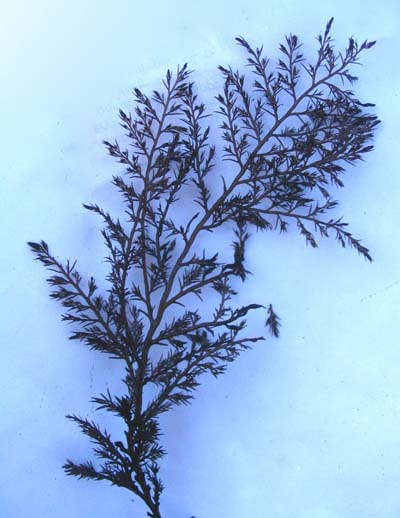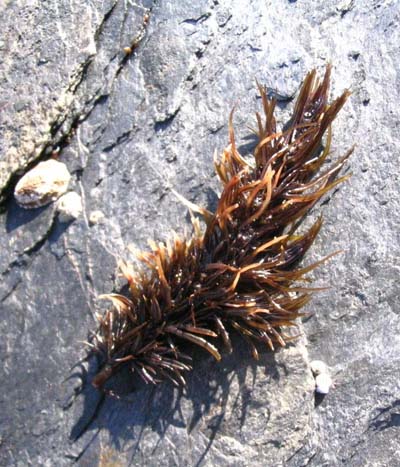
The "Bewildering Brush"
Morphology
On the four Odonthalia species of the Northwest:
"Since [the species] intergrade somewhat, they can be difficult to identify." - J.R. Waaland 1977 (1)
|
|
|

Odonthalia floccosa, herbarium specimen.
Cattle Point, Andrew C. Peterson, 4/26/1989. Picture width ~3cm.

Odonthalia sp. at Botany Beach. ~18cm height.

Odonthalia sp. at Botanical Beach. ~16 cm height.

Odonthalia sp., possibly Odonthalia floccosa by herbarium specimen match. ~5cm height.
References
1) Waaland, J. Robert. Common Seaweeds of the Pacific Coast. Seattle: Pacific Search Press, 1977.
2) Gabrielson, Paul W., Widdowson, Thomas B., and Lindstrom, Sandra C. Keys to the Seaweeds and Sea grasses of Southeast Alaska, British Columbia, Washington and Oregon. July 2006.
3) Lee, Robert Edward. Phycology. 2nd ed. Cambridge: Cambridge University Press, 1989.